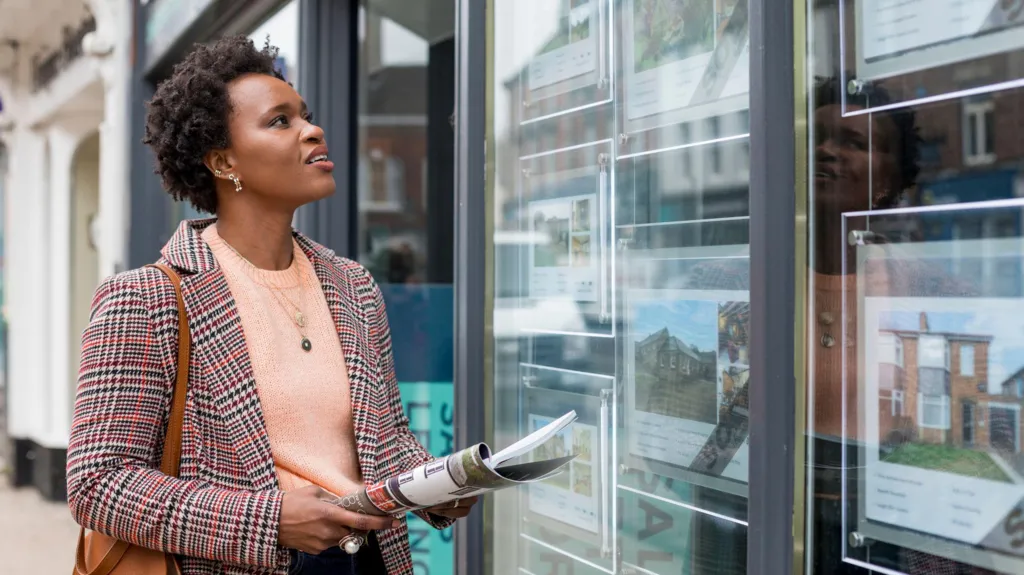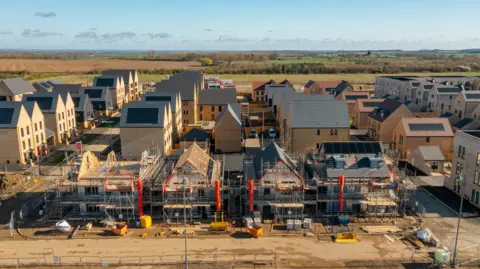
 Getty Images
Getty ImagesMortgage rates are expected to come down over the next year, which could make owning a home a possibility for millions more people.
Thinking about where to start can be a daunting prospect, but there are an increasing number of ways to save up for a deposit, and get a foothold in the housing market.
We spoke to some leading mortgage experts to get their tips for anyone starting out on the journey to owning their own home.
The average deposit paid for a first-time buyer is £34,500, according to UK Finance. So the sooner you start saving, the better.
A Lifetime ISA (individual savings account) offers 25% bonuses for those who are saving for a first home. For each £4,000 saved in any given tax year, the government will top it up with an extra £1,000.
Digital mortgage broker Tembo specialises in helping first-time buyers, and has seen a rise in savers starting young.
"If you maxed out your savings allowance from the age of 18 to 30, you could pick up £22,000 in free bonuses," says Tembo chief executive Richard Dana.
"Family members can contribute too. But beware that the money can only be withdrawn to fund a first-time home purchase up to the value of £450,000."
Those struggling to raise a deposit have now got a broad range of 95% loan-to-value (LTV) deals available, says David Hollingworth from mortgage brokers London & Country.
In fact, more low-deposit mortgages are available to choose from than at any time since the financial crisis of 2008, according to new figures.
"Yorkshire Building Society offers a £5,000 deposit mortgage which does what it says on the tin and could offer a mortgage equivalent to as much as 99% of the purchase price," says Mr Hollingsworth.
"Skipton's Track Record mortgage can offer as much as 100% lending for those that can demonstrate a track record of paying rent that exceeds the mortgage payment."
However, small deposit mortgages typically offer higher rates, and may not be suitable for many self-employed homebuyers who may struggle to meet the strict eligibility criteria.
 Getty Images
Getty ImagesShared ownership has been available in England since the 1980s and enables a first-time buyer to own a "share" in their home of between 25% and 75% of the value. There are similar schemes available in Scotland, Wales and Northern Ireland.
You need a small deposit and can take out a mortgage to buy your share and then pay rent to the landlord for the rest.
Over time you can increase the amount of the property you own and reduce rental payments. It's known as "staircasing" and the aim is to eventually own your home outright.
"Although shared ownership is usually seen as an option for younger, first-time buyers, that is not always the case," says Laura Gaskell, sales manager at shared ownership specialists Snugg Homes.
"The average age of a buyer with us is now 48 and we have people who have been homeowners previously. Our advice is to register your interest and regularly check the eligibility criteria."
The "Bank of Mum and Dad" might not be an option for some, but there are ways to get help from family members without borrowing any money at all.
An "income boost" mortgage (otherwise known as a Joint Borrower Sole Proprietor mortgage) allows a homebuyer to add up to three family members (or in some cases friends) to their mortgage to increase the amount they can borrow from a lender.
While the "boosters" are on the mortgage, they are not owners of the home and therefore the buyer's first-time buyer status is not affected.
"This is increasingly popular amongst younger first-time buyers who are earlier in their careers and are earning less," says Richard Dana from Tembo.
"It's the primary option for families who want to support their children, but might not have the cash available to gift as a deposit, or want to keep hold of cash savings for their retirement or a rainy day."
As buyers will be borrowing more than they would qualify for on their own, they should make sure they can afford the repayments.
The risk for the "boosters" is that they are jointly liable for the mortgage in the event the buyer is unable to make repayments.
 Getty Images
Getty ImagesMany lenders offer "professional" mortgages which could enable a buyer working in a regulated or accredited profession - such as doctors, architects and accountants - to borrow up to six times their income.
Specialist lenders also offer deals to particular professions.
For instance, Teachers Building Society works with those in the teaching profession, while Kensington offers a better earnings calculation to NHS staff, police officers, firefighters and teachers.
"Given that these career profiles are often more secure, Kensington felt it could be more generous in its approach as long as the mortgage will be affordable," says David Hollingworth.
"It can also take account of overtime and income from a second job to help improve the borrowing amount."
But he adds: "It's always still important to shop around. Rates on these mortgages can be a little higher, so taking advice on the best overall fit is important."